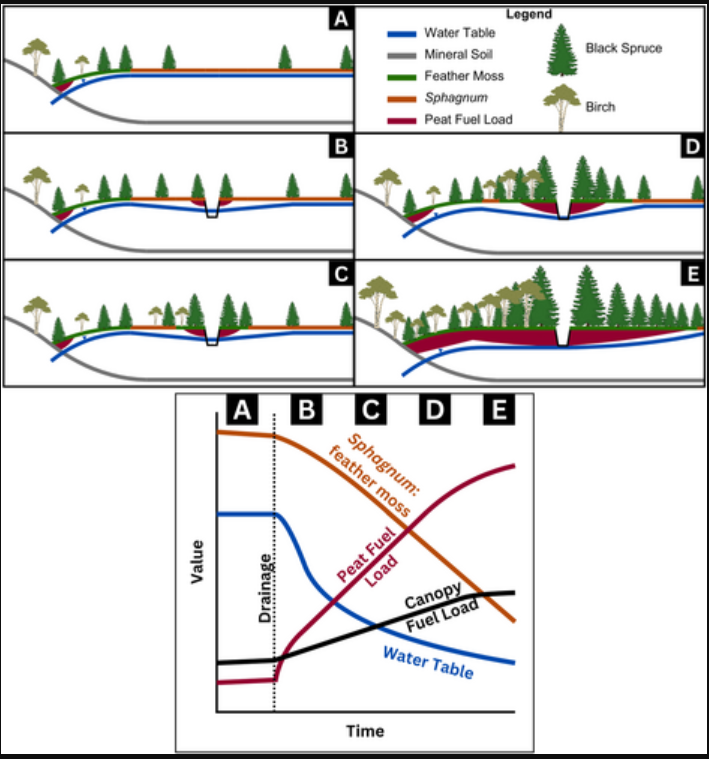
Time lapse of the progression of the boreal peatland as it dried out and became better grounds for the 2021 fire.
Credit: Ferrer et al. https://doi.org/10.1029/2025GL115170
AGU News
Press registration open for 2026 Ocean Sciences Meeting
Full time reporters and press officers are invited to attend, free of charge, the Oceans Sciences Meeting, hosted by AGU, The Oceanography Society and the Association for the Sciences of Limnology and Oceanography in Glasgow, Scotland, 22-27 February 2026. [OSM26 press information][eligibility]
Featured Research
As cities grow, poorer residents are moving into landslide zones
The total number of buildings built on landslides in cities has doubled since 1985, although the cities themselves have only increased in area by about 48%. Many of these landslides will impact poorer communities as researchers found that informal settlements, or slums, were more likely to be built in landslide zones. [Geophysical Research Letters letter] [More research about living on landslides]
A peatland dried up in 1987 and it may have made a wildfire worse in 2021
The fire burned over 4,400 acres in Alberta in 2021 and continued to smolder for over a year. The sections of the peatland that burned were drained in 1987 for peat farming and, at the time of draining, had no trees. After the peatland was drained, birch and black spruce trees began to grow. These trees sucked moisture from the peat and encouraged the growth of shade-loving moss that ignites better than moss that previously grew there. The trees themselves didn’t add to the burn, but they dried the peat and helped moss grow, both of which contributed to the intensity of the fire, which was all set off by the initial drying of the peatlands. [JGR Biogeosciences study]
No one water climate adaptation fits all
Scientists modeled how well every climate adaptation for water resources in the western United States worked at its highest capacity. The results were mixed. For example, wastewater recycling improved indoor and outdoor water coverage, but increased electricity use. Reductions in indoor water use decreased electricity but had limited potential when compared to other options like groundwater storage. The researchers explained that the most beneficial water climate adaptation would have to be a multi-pronged approach instead of a one-size-fits-all change. [Earth’s Future study]
The state of stress in the Nankai subduction zone
The Nankai subduction zone, in southern Japan, has hosted several large magnitude 8+ earthquakes during the last three hundred years. But, how stressed is it right now? [Eos Editors’ highlights] [JGR Solid Earth study]
What goes up must come down: movement of water in Europa’s crust
Using Earth’s glaciers as an analog, a new study explores the possibility of downward propagation of fractures and melt in Europa’s icy crust. [Eos Editors’ highlights] [JGR Planets study]